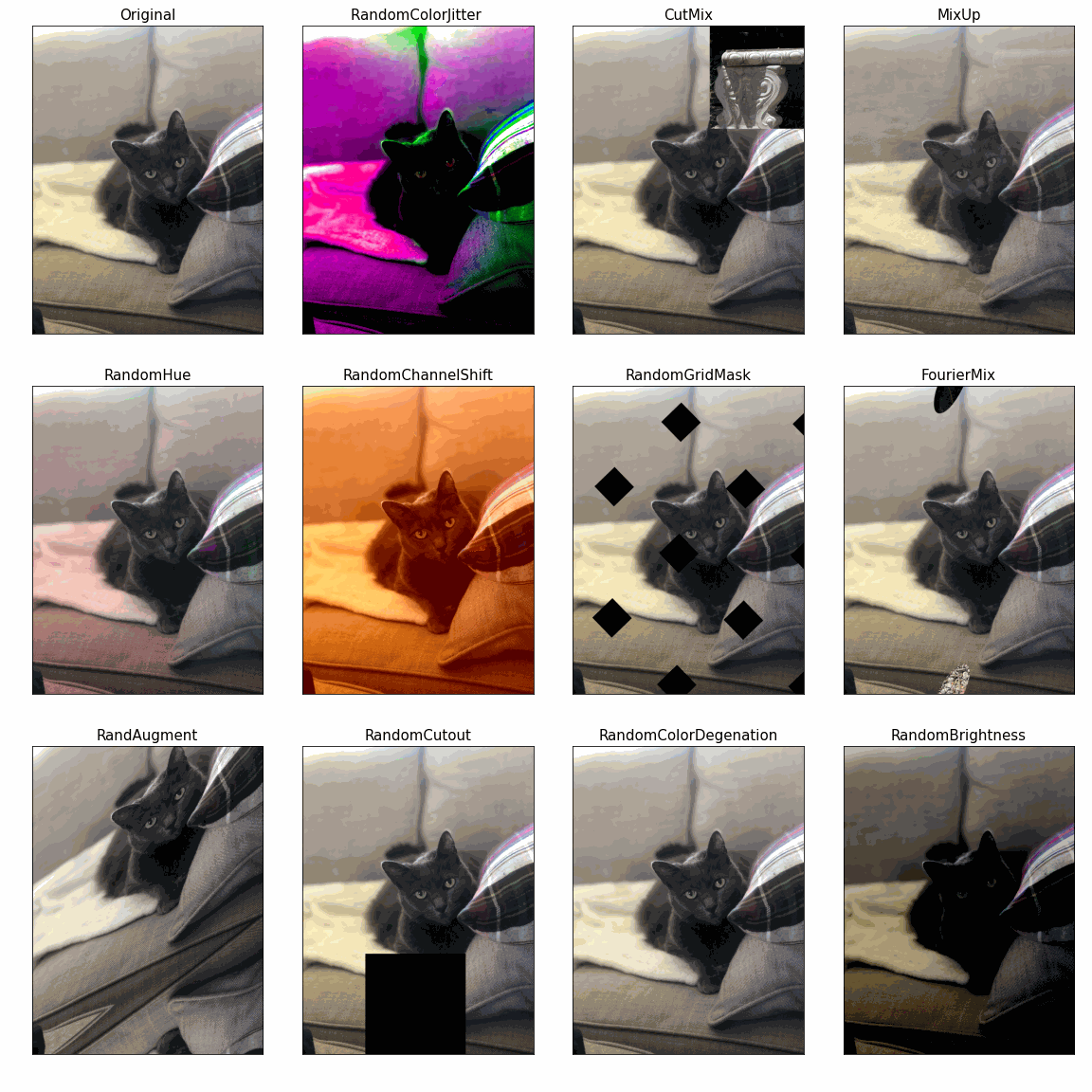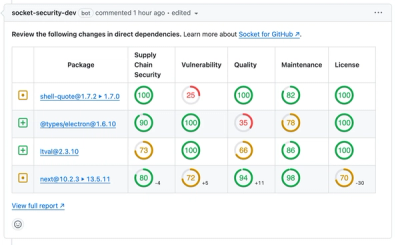
Security Fundamentals
Turtles, Clams, and Cyber Threat Actors: Shell Usage
The Socket Threat Research Team uncovers how threat actors weaponize shell techniques across npm, PyPI, and Go ecosystems to maintain persistence and exfiltrate data.
KerasCV is a library of modular computer vision components that work natively with TensorFlow, JAX, or PyTorch. Built on Keras 3, these models, layers, metrics, callbacks, etc., can be trained and serialized in any framework and re-used in another without costly migrations. See "Configuring your backend" below for more details on multi-framework KerasCV.

KerasCV can be understood as a horizontal extension of the Keras API: the components are new first-party Keras objects that are too specialized to be added to core Keras. They receive the same level of polish and backwards compatibility guarantees as the core Keras API, and they are maintained by the Keras team.
Our APIs assist in common computer vision tasks such as data augmentation, classification, object detection, segmentation, image generation, and more. Applied computer vision engineers can leverage KerasCV to quickly assemble production-grade, state-of-the-art training and inference pipelines for all of these common tasks.
KerasCV supports both Keras 2 and Keras 3. We recommend Keras 3 for all new users, as it enables using KerasCV models and layers with JAX, TensorFlow and PyTorch.
To install the latest KerasCV release with Keras 2, simply run:
pip install --upgrade keras-cv tensorflow
There are currently two ways to install Keras 3 with KerasCV. To install the latest changes for KerasCV and Keras, you can use our nightly package.
pip install --upgrade keras-cv-nightly tf-nightly
To install the stable versions of KerasCV and Keras 3, you should install Keras 3 after installing KerasCV. This is a temporary step while TensorFlow is pinned to Keras 2, and will no longer be necessary after TensorFlow 2.16.
pip install --upgrade keras-cv tensorflow
pip install --upgrade keras
[!IMPORTANT] Keras 3 will not function with TensorFlow 2.14 or earlier.
If you have Keras 3 installed in your environment (see installation above),
you can use KerasCV with any of JAX, TensorFlow and PyTorch. To do so, set the
KERAS_BACKEND environment variable. For example:
so by setting the KERAS_BACKEND environment variable. For example:
export KERAS_BACKEND=jax
Or in Colab, with:
import os
os.environ["KERAS_BACKEND"] = "jax"
import keras_cv
[!IMPORTANT] Make sure to set the
KERAS_BACKENDbefore import any Keras libraries, it will be used to set up Keras when it is first imported.
Once that configuration step is done, you can just import KerasCV and start using it on top of your backend of choice:
import keras_cv
import keras
filepath = keras.utils.get_file(origin="https://i.imgur.com/gCNcJJI.jpg")
image = np.array(keras.utils.load_img(filepath))
image_resized = keras.ops.image.resize(image, (640, 640))[None, ...]
model = keras_cv.models.YOLOV8Detector.from_preset(
"yolo_v8_m_pascalvoc",
bounding_box_format="xywh",
)
predictions = model.predict(image_resized)
import tensorflow as tf
import keras_cv
import tensorflow_datasets as tfds
import keras
# Create a preprocessing pipeline with augmentations
BATCH_SIZE = 16
NUM_CLASSES = 3
augmenter = keras_cv.layers.Augmenter(
[
keras_cv.layers.RandomFlip(),
keras_cv.layers.RandAugment(value_range=(0, 255)),
keras_cv.layers.CutMix(),
],
)
def preprocess_data(images, labels, augment=False):
labels = tf.one_hot(labels, NUM_CLASSES)
inputs = {"images": images, "labels": labels}
outputs = inputs
if augment:
outputs = augmenter(outputs)
return outputs['images'], outputs['labels']
train_dataset, test_dataset = tfds.load(
'rock_paper_scissors',
as_supervised=True,
split=['train', 'test'],
)
train_dataset = train_dataset.batch(BATCH_SIZE).map(
lambda x, y: preprocess_data(x, y, augment=True),
num_parallel_calls=tf.data.AUTOTUNE).prefetch(
tf.data.AUTOTUNE)
test_dataset = test_dataset.batch(BATCH_SIZE).map(
preprocess_data, num_parallel_calls=tf.data.AUTOTUNE).prefetch(
tf.data.AUTOTUNE)
# Create a model using a pretrained backbone
backbone = keras_cv.models.EfficientNetV2Backbone.from_preset(
"efficientnetv2_b0_imagenet"
)
model = keras_cv.models.ImageClassifier(
backbone=backbone,
num_classes=NUM_CLASSES,
activation="softmax",
)
model.compile(
loss='categorical_crossentropy',
optimizer=keras.optimizers.Adam(learning_rate=1e-5),
metrics=['accuracy']
)
# Train your model
model.fit(
train_dataset,
validation_data=test_dataset,
epochs=8,
)
If you'd like to contribute, please see our contributing guide.
To find an issue to tackle, please check our call for contributions.
We would like to leverage/outsource the Keras community not only for bug reporting, but also for active development for feature delivery. To achieve this, here is the predefined process for how to contribute to this repository:
Thank you to all of our wonderful contributors!
Many models in KerasCV come with pre-trained weights. With the exception of StableDiffusion and the standard Vision Transformer, all of these weights are trained using Keras and KerasCV components and training scripts in this repository. While some models are not trained with the same parameters or preprocessing pipeline as defined in their original publications, the KerasCV team ensures strong numerical performance. Performance metrics for the provided pre-trained weights can be found in the training history for each documented task. An example of this can be found in the ImageNet classification training history for backbone models. All results are reproducible using the training scripts in this repository.
Historically, many models have been trained on image datasets rescaled via manually
crafted normalization schemes.
The most common variant of manually crafted normalization scheme is subtraction of the
imagenet mean pixel followed by standard deviation normalization based on the imagenet
pixel standard deviation.
This scheme is an artifact of the days of manual feature engineering, but is no longer
required to score state of the art scores using modern deep learning architectures.
Due to this, KerasCV is standardized to operate on images that have been rescaled using
a simple 1/255 rescaling layer.
This can be seen in all KerasCV training pipelines and code examples.
Note that in some of the 3D Object Detection layers, custom TF ops are used. The binaries for these ops are not shipped in our PyPi package in order to keep our wheels pure-Python.
If you'd like to use these custom ops, you can install from source using the instructions below.
Installing custom ops from source requires the Bazel build system (version >= 5.4.0). Steps to install Bazel can be found here.
git clone https://github.com/keras-team/keras-cv.git
cd keras-cv
python3 build_deps/configure.py
bazel build build_pip_pkg
export BUILD_WITH_CUSTOM_OPS=true
bazel-bin/build_pip_pkg wheels
pip install wheels/keras_cv-*.whl
Note that GitHub actions exist to release KerasCV with custom ops, but are currently disabled. You can use these actions in your own fork to create wheels for Linux (manylinux2014), MacOS (both x86 and ARM), and Windows.
KerasCV provides access to pre-trained models via the keras_cv.models API.
These pre-trained models are provided on an "as is" basis, without warranties
or conditions of any kind.
The following underlying models are provided by third parties, and are subject to separate
licenses:
StableDiffusion, Vision Transformer
If KerasCV helps your research, we appreciate your citations. Here is the BibTeX entry:
@misc{wood2022kerascv,
title={KerasCV},
author={Wood, Luke and Tan, Zhenyu and Stenbit, Ian and Bischof, Jonathan and Zhu, Scott and Chollet, Fran\c{c}ois and Sreepathihalli, Divyashree and Sampath, Ramesh and others},
year={2022},
howpublished={\url{https://github.com/keras-team/keras-cv}},
}
FAQs
Industry-strength computer Vision extensions for Keras.
We found that keras-cv demonstrated a healthy version release cadence and project activity because the last version was released less than a year ago. It has 2 open source maintainers collaborating on the project.
Did you know?

Socket for GitHub automatically highlights issues in each pull request and monitors the health of all your open source dependencies. Discover the contents of your packages and block harmful activity before you install or update your dependencies.

Security Fundamentals
The Socket Threat Research Team uncovers how threat actors weaponize shell techniques across npm, PyPI, and Go ecosystems to maintain persistence and exfiltrate data.

Security News
At VulnCon 2025, NIST scrapped its NVD consortium plans, admitted it can't keep up with CVEs, and outlined automation efforts amid a mounting backlog.

Product
We redesigned our GitHub PR comments to deliver clear, actionable security insights without adding noise to your workflow.